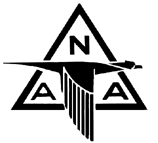Dynam Brittish Spitfire
This build was my first, so to say it was easy, yes it was easy. At first, I was worried about the decals but they went on smooth. The radio I used was a Turnigy 9X and, at first, I could not figure out the throttle without reading some instructions. Flying this spitfire, I would say it's good on takeoffs, but landings are tough. Sometimes I nailed a landing here and there but, most of the time, it nosed over on landing. I have had to replace several props and paint over the scratches on the nose. In flight, it's great. Just don't land. Lol.
The
Supermarine Spitfire is a British single-seat fighter aircraft that was used by the Royal Air Force and many other Allied countries before, during and after World War II.
The Spitfire was built in many variants, using several wing
configurations, and was produced in greater numbers than any other
British aircraft. It was also the only British fighter to be in
continuous production throughout the war. The Spitfire continues to be
popular among enthusiasts, with approximately 54 Spitfires being airworthy, while many more are static exhibits in aviation museums throughout the world.
The Spitfire was designed as a short-range, high-performance interceptor aircraft by R. J. Mitchell, chief designer at Supermarine Aviation Works, which operated as a subsidiary of Vickers-Armstrong from 1928. In accordance with its role as an interceptor, Mitchell supported the development of the Spitfire's distinctive elliptical wing
(designed by B. Shenstone) to have the thinnest possible cross-section;
this enabled the Spitfire to have a higher top speed than several
contemporary fighters, including the Hawker Hurricane. Mitchell continued to refine the design until his death in 1937, whereupon his colleague Joseph Smith took over as chief designer, overseeing the development of the Spitfire through its multitude of variants.
During the Battle of Britain,
from July to October 1940, the Spitfire was perceived by the public to
be the main RAF fighter, though the more numerous Hawker Hurricane
shouldered a greater proportion of the burden against the Nazi German
air force, the Luftwaffe.
Spitfire units, however, had a lower attrition rate and a higher
victory-to-loss ratio than those flying Hurricanes because of its higher
performance. Spitfires in general were tasked with engaging Luftwaffe
fighters (mainly Messerschmitt Bf 109E series aircraft which were a close match for the Spitfire) during the Battle.
After the Battle of Britain, the Spitfire superseded the Hurricane to become the backbone of RAF Fighter Command, and saw action in the European, Mediterranean, Pacific and the South-East Asian
theatres. Much loved by its pilots, the Spitfire served in several
roles, including interceptor, photo-reconnaissance, fighter-bomber and
trainer, and it continued to serve in these roles until the 1950s. The Seafire was a carrier-based adaptation of the Spitfire which served in the Fleet Air Arm from 1942 through to the mid-1950s. Although the original airframe was designed to be powered by a Rolls-Royce Merlin engine producing 1,030 hp (768 kW), it was strong enough and adaptable enough to use increasingly powerful Merlins and, in later marks, Rolls-Royce Griffon engines producing up to 2,340 hp (1,745 kW); as a consequence of this the Spitfire's performance and capabilities improved over the course of its life.

The Dynam Spitfire is realistic looking war bird.The
Dynam Spitfire is powered by the dectrum BM3715 -890kv brushless motor. This Model uses a 2200 3S 11.1v
battery pack.
Airplane Features:
- Uses most popular size parkflyer battery, 2200 3S (11.1v) 30C lipo battery
- Powerful detrum BM3715 - 890KV outrunner brushless power system
- 30A Brushless ESC and Switch-Mode BEC with Deans / T-Plugs
- Retractable landing gear
- EPO construction with many surface details
- Detailed Body Structure.
- Easy to build.
Airplane Specifications:
| WingSpan | 1200mm / 47.2in |
| Length | 1010mm / 40in |
| Servos | 4 x 9g |
| Battery | 2200 11.v 30C 11.1v 3S |
| Motor Size | BM3715A-KV890 Brushless Outrunner Motor |
| ESC Size | Dectrum 30A Brushless with Deans |
| Prop Size | 3 Blade - 11 x 7 x 3 |
| Radio | 5 + Channel |
|
|
|
|
|
|
|
|

































